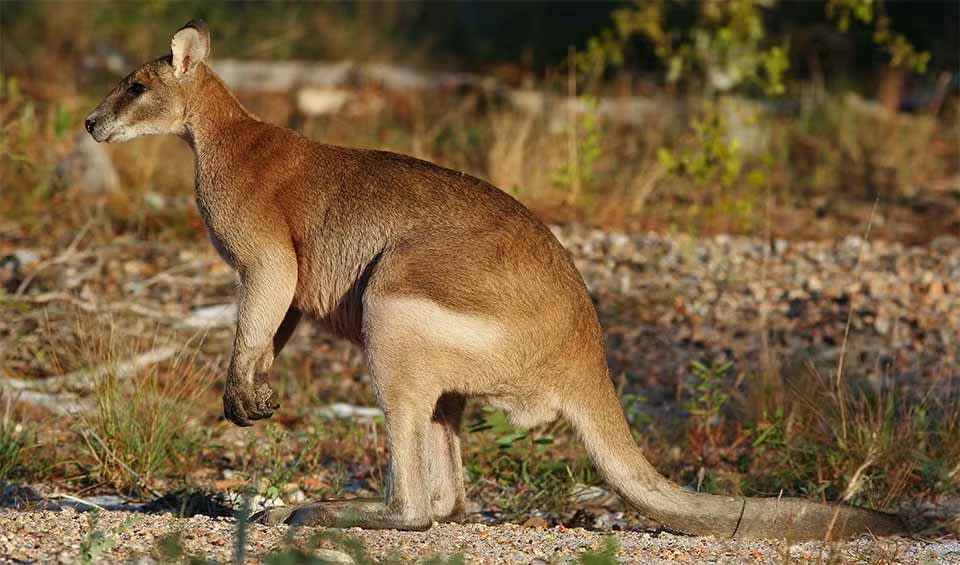A quintessential inhabitant of the Australian landscape, it shares many characteristics with its terrestrial kangaroo counterparts, embodying the essence of grace and resilience in its form and function. Sporting distinctive features such as large ears, a brownish-hued body, and the quintessential marsupial pouch for nurturing its young, the Agile Wallaby exudes a sense of natural beauty and adaptability that is emblematic of Australia’s unique wildlife.
One of the most striking attributes of the Agile Wallaby is its long, elegant tail, which serves not only as a visual adornment but also as a crucial tool for maintaining balance and stability during its agile hops across the terrain. This specialized appendage enables the wallaby to navigate diverse landscapes with precision and agility, allowing it to evade predators and traverse varying terrain with ease.
In their natural habitat, Agile Wallabies must remain vigilant, particularly around waterways where lurking crocodiles pose a constant threat. Their inherent wariness and keen senses serve as vital defense mechanisms, allowing them to detect potential dangers and take evasive action to ensure their survival.
Despite the ever-present risks, Agile Wallabies are primarily herbivorous, with a diverse array of plant-based feeding options comprising their diet. From succulent grasses to leafy shrubs and foliage, these adaptable marsupials display a remarkable ability to thrive on a variety of vegetation, making them well-suited to a range of habitats across their native range.
During pregnancy, female Agile Wallabies often seek the companionship of their peers, forming tight-knit social groups where they can share experiences and provide mutual support. After giving birth, the newborn joeys instinctively seek refuge in their mother’s pouch, where they are nurtured and protected until they are old enough to venture out into the world on their own.
While Agile Wallabies are known for their agility and speed, they are not without vulnerabilities. When threatened, they may sustain injuries while attempting to flee from predators or navigate challenging terrain. Despite these risks, these resilient marsupials continue to adapt and thrive in their natural environment, embodying the spirit of endurance and resilience that defines Australia’s unique wildlife heritage.
Distribution
 Australia
Australia Indonesia
Indonesia Papua New Guinea
Papua New GuineaAnything we've missed?
Help us improve this page by suggesting edits. Glory never dies!
Suggest an editGet to know me
Terrestrial / Aquatic
Altricial / Precocial
Polygamous / Monogamous
Dimorphic (size) / Monomorphic
Active: Diurnal / Nocturnal
Social behavior: Solitary / Pack / Herd
Diet: Carnivore / Herbivore / Omnivore / Piscivorous / Insectivore
Migratory: Yes / No
Domesticated: Yes / No
Dangerous: Yes / No





